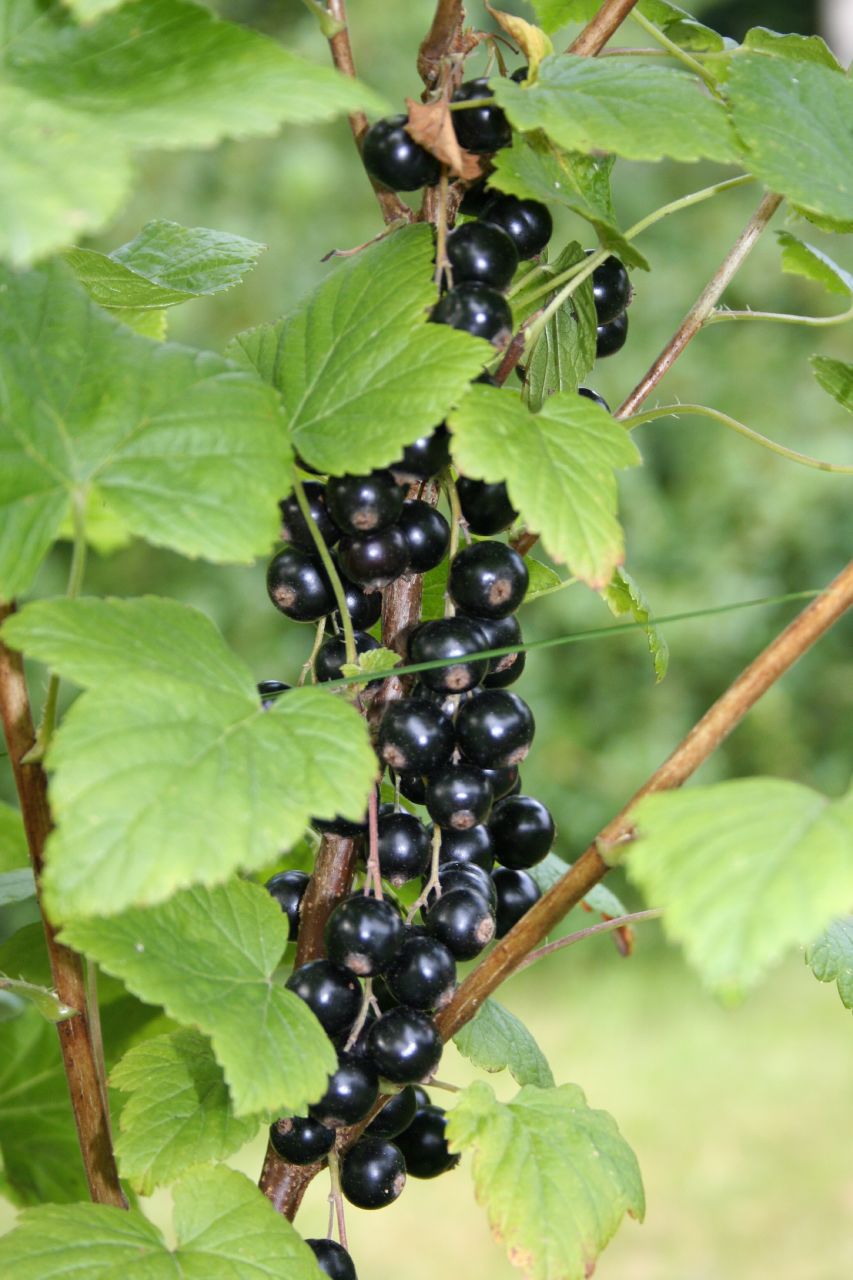Ribes spp.
Grossulariaceae (Currant Family)
Quick ID:
The many species of Ribes have a few things in common. Look for deciduous shrubs with alternate, palmately lobed leaves growing along streams and on drier foothills. The spicy-scented flowers can be white, pinkish or yellow, with petals fused into a tube at the base. The ovaries are inferior-somewhat more rare in the plant kingdom than superior ovaries. This basically means that the female part of the flower (that, once pollinated, will swell into a seed-bearing fruit) is located below where the petals and sepals are attached.
Incidentally, inferior ovaries evolved later in plants; a protective measure to keep the important reproductive parts tucked away. It's easy to see once the fruit starts forming, with the end result being a dry little spike where the flower once was, right at the end of the berry.
Ribes is a large genus; we have 14 species that are common throughout Montana. The shrubs grow from three to over nine feet tall, spreading into a thicket through zealous new sprouts that spring from the roots. The berries are prolific, ranging from shades of yellow, orange, and red to a purplish-black. In general, gooseberries have prickles and currants do not. Common names being fickle as they are, however, this is not always the case.
Ribes are native to high latitudes of the northern hemisphere, and can be found in every Canadian province and US state except Louisiana and Hawaii. Europe and Asia also host several native species. Click here to see distribution maps of different species.
What's in a Name?
Over 2000 years ago, the Greek city Corinthe began growing and shipping a small dried grape (Uva corinthiaca) all over Europe. The word "currant" is a corruption of "Corinthe"; it was incorrectly assumed that these Corinthian grapes were actually Ribes berries. The misnomer stuck. Ribes, in turn, derives from the Arabic or Persian word ribas, "acid-tasting". The root of the family name, Grossularia, is a Latinization of the French word for currant, groseille. And gooseberries, well...they just taste good when they're stuffed into a roast goose, according to old English custom.

Tidbits: It comes as no surprise that this useful berry has such a long and vivid history. North American tribes used currants and gooseberries for summer and winter sustenance, as treatment for ailments ranging from toothaches to kidney disease to snakebites, and as a seasonal signal for when to plow and plant corn. Gooseberry thorns were used to remove splinters and apply tattoos. It was believed that Ribes growing alongside streams was an indicator of fish, and that sprigs of the plant placed in cribs kept babies happy. Lewis and Clark were delighted with the three species of Ribes they discovered on their travels along the Missouri River:
wax currant (R. cereum)
sticky currant (R. viscosissimum)
and golden currant (R. aureum).
Golden currant is perhaps the most well-known and widespread. Today, currants are generally thought of as a tasty berry. Indeed, all Ribes fruits are edible, but they can be sweetly juicy, puckery tart, dry and seedy, or just plain weird tasting.
Currants are host to the first stage of blister rust (Cronartium ribicola), a fungus that's harmless to Ribes but deadly to five-needled pines. Blister rust was introduced to the US from Europe around 1900, and through the 1950s there was a massive (unsuccessful) Ribes eradication effort which included a ban on commercial production. Today, currants are only produced commercially in Greece and South Africa.
Wild gardening:
Ribes offer early spring flowers (April-May), bright summer berries and bold fall colors. They're easily propagated by their offshoots, which can be tugged out of the ground, snipped off along with some stringy roots and popped in the ground as is.
As with all new plantings, give them plenty of water the first season to establish a healthy root system, and within three years they'll start bearing fruit. They are happy in sand or clay, sun or part shade, standing water or drought. Trim suckers diligently to keep a tidy, compact shrub, or allow to naturalize into a thicket haven for wildlife. Here at the Nature Adventure Teaching Garden at Fort Missoula, Golden Currant fills out a native bed, along with Western Yarrow (Achillea millefolium), Prairie Junegrass (Koelaria macrantha) and Big Sagebrush (Artemisia tridentata).
Currants fill an important niche by providing an early-season nectar source for bees and hummingbirds, particularly the Rufous and Calliope in western Montana. For more info on nontraditional pollinator plants, check out this excellent article from Montana Wildlife Gardener The berries are a source of food for birds, black bears and rodents, while the abundant leaves are an important browse for deer and elk in the wild.

+flower.JPG)








No comments:
Post a Comment